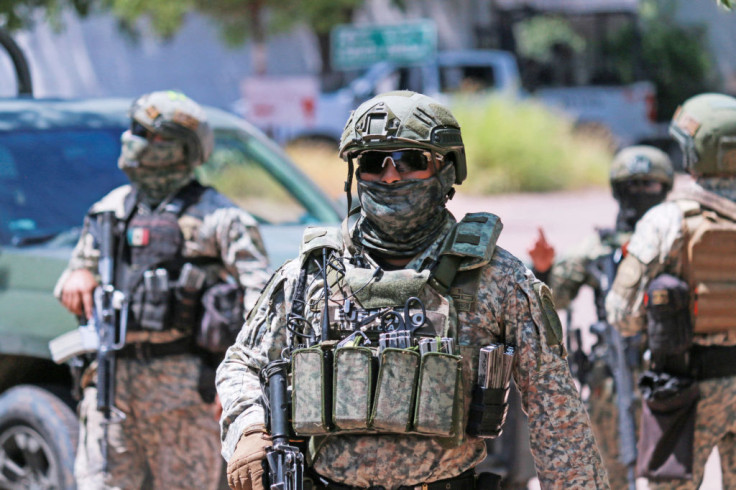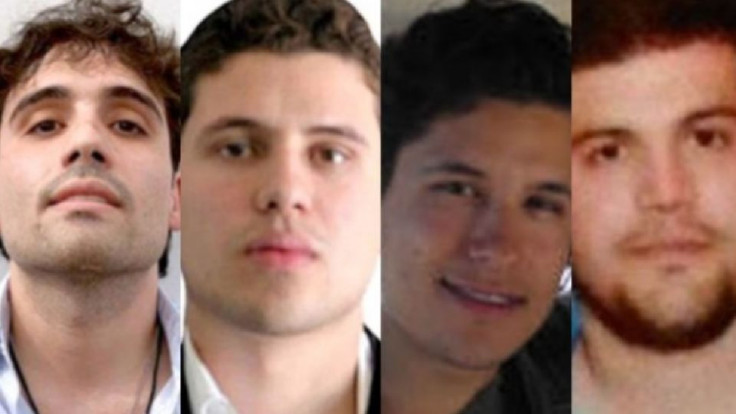
After the arrest of Ismael "El Mayo" Zambada, reportedly handed over to U.S. authorities by his godson Joaquín Guzmán López, son of Joaquín "El Chapo" Guzmán, Sinaloa has descended into a violent internal war, with Los Chapitos and La Mayiza, the cartel's two main factions, fighting.
Zambada was captured in July 2024, and just weeks later, on Sept. 9, violence erupted in the state capital, Culiacán, where reports emerged of high-speed chases, shootouts and blockades across several parts of the city.
Since then, thousands have been killed or kidnapped, and according to the Mexican news outlet Noroeste, there have been 1,972 reported homicides in Sinaloa over the past 12 months, an average of 5.4 per day, which marks an increase of more than 200 percent compared with the same period between September 2023 and August 2024, when 600 homicides were reported.
Kidnappings have surged at a similar rate, with 1,949 reported victims, an average of 5.3 per day since the conflict began.
In recent months, reports of alleged cooperation between former high-ranking members of the Sinaloa Cartel, including Ovidio Guzmán López, another son of El Chapo, and the U.S. government, have fueled further infighting and deepened fractures within the cartel's internal structure.

As El País reported, what began as a two-sided power struggle between Los Chapitos and La Mayiza has evolved into a more chaotic and multi-front war, as other criminal groups have entered the region, including the Guasave Cartel, led by Fausto Isidro Meza Flores, known as "El Chapo Isidro," and a faction headed by Aureliano Guzmán Loera, alias "El Guano," one of El Chapo's brothers.
In response to the growing violence, the Mexican government has deployed thousands of federal troops to Culiacán, and according to a senior federal security official stationed in the city who spoke with El País, authorities have inflicted major blows to criminal networks but acknowledge that much remains to be done.
"We've had record-breaking seizures and arrests, but the problem is enormous," the official said.
Earlier this year, President Claudia Sheinbaum reaffirmed her administration's commitment to restoring peace in Sinaloa, where communities have spent the past year caught in the crossfire.
"We are working to bring peace to Sinaloa, and that is going to happen," Sheinbaum said on July 25. "We are working every day, and when there is honesty, strategy and hard work, there are results, in Sinaloa and across the country. so of course, Sinaloa will be pacified."
That same day, Mexico's Secretary of Defense Ricardo Trevilla Trejo confirmed that federal operations have weakened the Sinaloa Cartel to the point that it has lost control of 30 out of the 42 trafficking routes and distribution hubs it once dominated.
The war between Los Chapitos and La Mayiza has also taken a toll on the state's economy, and according to economist Cristina Ibarra of the Autonomous University of Sinaloa, at least 10,000 jobs have been lost across the region.
Exhausted by the daily violence and growing instability, thousands of residents gathered over the weekend in a mass protest in Culiacán to demand action from the government.
With more than 50,000 people in attendance, Sinaloa residents gathered to honor the victims of the conflict, call on President Sheinbaum and Governor Rubén Rocha Moya to take decisive action, and demand stronger security and justice measures across the state.
"The people who marched are right, and we say this clearly: we have been fighting organized crime, but we haven't finished the job," Rocha Moya said. "Our commitment to those who marched yesterday, to the one million residents of Culiacán, and to the three million people who live in Sinaloais to keep fighting crime until, as these citizens demanded, we achieve peace, we enjoy peace, and we create the kind of social conditions where we can be more productive and build stronger communities."
Twelve months into the war, which side is winning?
What began as an internal dispute in Culiacán has grown into one of the deadliest cartel conflicts in recent Mexican history. Yet despite the staggering number of casualties, neither side had gained a clear upper handuntil last month.
According to a report from CrashOut, sources within La Mayiza now believe they are on track to win the conflict by the end of the year. A former member of El Mayo Zambada's security team told the outlet that a victory by the faction led by Ismael Zambada Sicairos, known as "Mayito Flaco," would mark the beginning of a new chapter in the cartel's evolution.
"A new map of the cartel is being drawn," the source said.
Local sources in Sinaloa report that La Mayiza has taken control of key territory in both rural regions and urban areas of Culiacán, a city long considered a stronghold of the Guzmán family. The report also highlights a series of high-profile arrests carried out by federal authorities against members of Los Chapitos, which may have disrupted the group's internal command.
La Mayiza has reportedly gained additional support from former allies of Los Chapitos, including some criminal cells that once belonged to their armed enforcement group known as Los Ninis, according to CrashOut.
© 2025 Latin Times. All rights reserved. Do not reproduce without permission.







